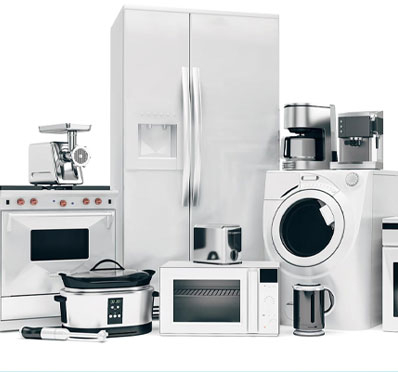2 million tonnes of WEEE, or Waste Electrical and Electronic Equipment, is discarded every year in the UK, yet only a small percentage of these are repurposed or recycled. The consequences of electrical items heading to landfill extend beyond simply wasting money – it also wastes valuable resources and has a negative impact on the environment. For these reasons, it’s important to know how to dispose of your unwanted or broken electrical items properly and safely.
What counts as WEEE?
Identifying the item is the first step to making sure it’s disposed of properly. WEEE can be categorised into ten broad groups:
- Large appliances, such as cookers, fridges and washing machines
- Small appliances, like irons, toasters and clocks
- IT and communication equipment, including telephones, laptops and calculators
- Consumer equipment, such as musical instruments, TVs and radios
- Lighting equipment, including fluorescent tubes and lamps
- Electrical tools, such as electric saws, drills and lawnmowers
- Toys or leisure equipment, including electric trains, electrical sports equipment like running machines, and gaming consoles
- Medical devices that are non-infected, such as cardiology equipment and dialysis machines
- Monitoring equipment, like smoke detectors and thermostats
- Automatic dispensers, such as money dispensers or hot drink machines
How to recycle electrical items
From hairdryers to fridge-freezers, e-recycling encapsulates a large range of items. And many of these items are made up of numerous materials, from metal and glass to ceramics and plastics. So, when it comes to disposing of electrical items, sorting them into the correct categories for recycling is essential to ensure that the materials can be reused. Many of the materials contained within these items can be hazardous, such as arsenic, lead, mercury and cadmium, so there are health risks if electronics aren’t handled properly.
Small items, such as kettles and TVs, can be recycled at your local waste collection centre, where there will be specific recycling points for these types of electrical products. Retailers may also offer collection services or take-back schemes for customers buying the same item.
However, the best solution to ensure that your items are disposed of safely and in a convenient way is to have them recycled by a certified e-waste recycler, such as Priority WEEE, who have experience of dealing with different items and know precisely how to recycle them properly. Not only that, but with so many of our digital devices containing sensitive or confidential information, a professional company will ensure they are disposed of in a way that protects your data.
From sharp objects and hazardous components to fire and explosion risks and the threat of cuts and scrapes, there are many potential dangers associated with the disposal of electrical products. Our team are qualified and experienced, so we know how to recycle items safely, ensuring that you avoid the risk of injury entirely while also making sure that your discarded products don’t damage the environment.
Working with WEEE experts also means that you’re not having to identify different products, as a professional company will handle everything from IT equipment and kitchen appliances to batteries. For more information about electrical recycling and the services we provide, or to request a free, no obligation quote, contact us today.



2 Comments